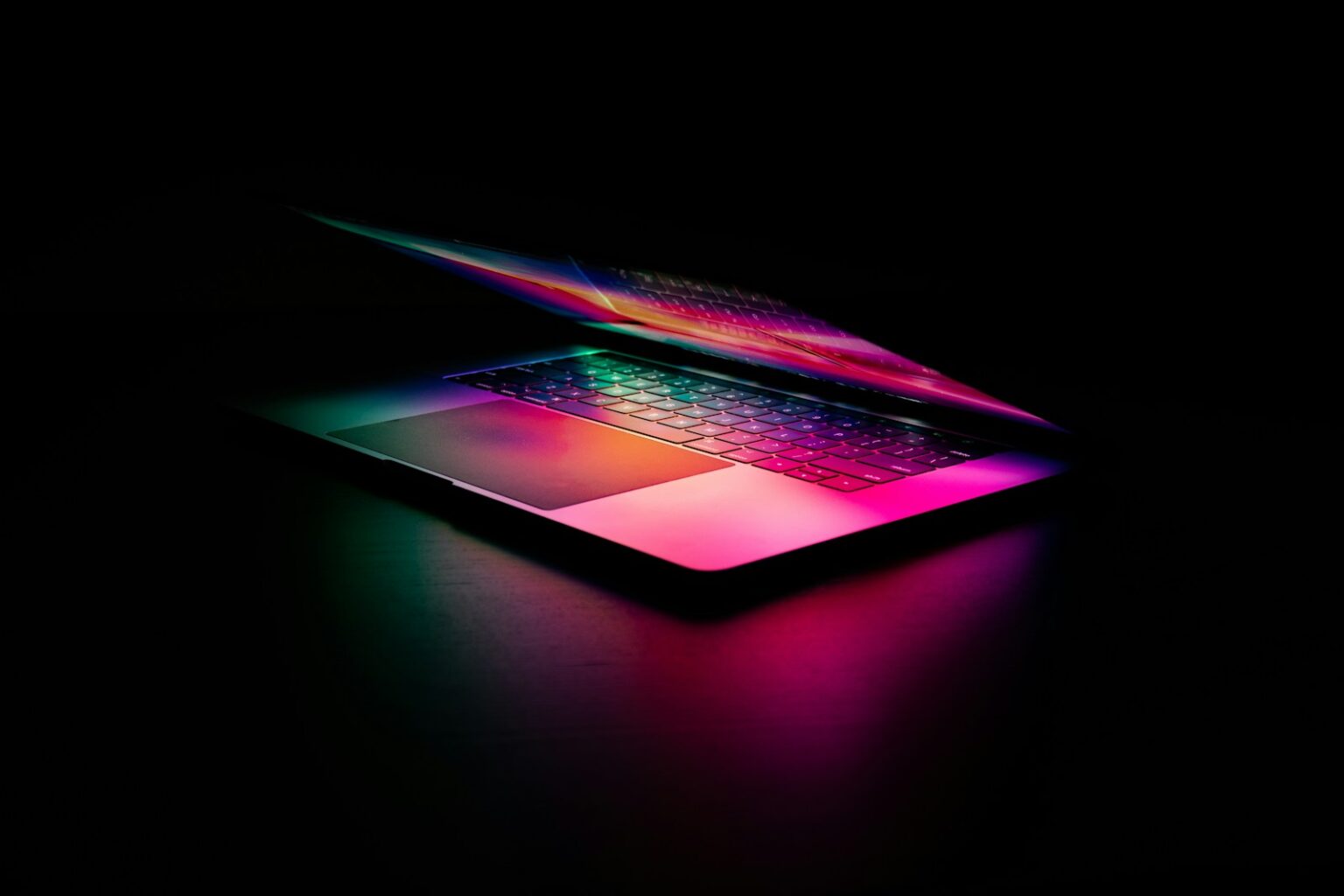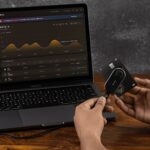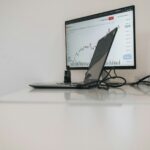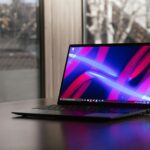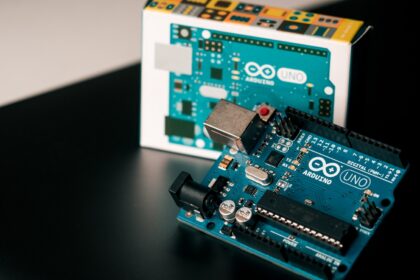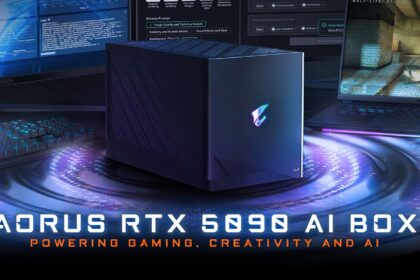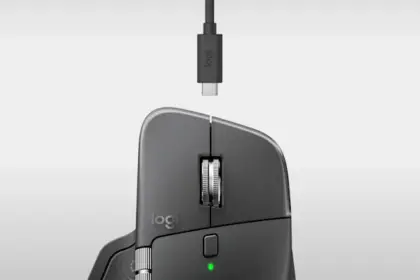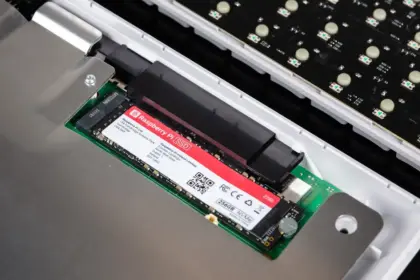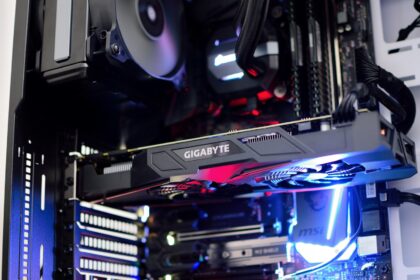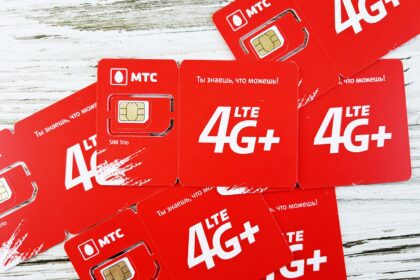Welcome, fellow defenders of the digital realm! Selecting a laptop may not sound thrilling, yet the decision is anything but small. Think of it as picking the hammer a master carpenter reaches for; the wrong one bends, chips, or simply feels off in the hand. A graphic designer relies on color-true brushes, and a heavy-duty welder counts on circuits that won’t melt under strain. For those of us in cybersecurity, the laptop sits at the heart of every scan, every packet analysis, and every red-blue team drill. It is the weapon we type commands into, the shield we fold closed while travelling, and the undemanding teammate that boots without tantrums at dawn. Because of all that, the machine had better be sturdy, responsive, and sealed against prying eyes. In the following pages we break down the most talked-about models of 2023: what chips throttle them forward, what keyboards keep night pours comfortable, and what tiny sensors might trip Zoom meetings. Whether you are accepting your first internship badge or reviewing malware for a defence contractor, the details are laid out plainly and the trade-offs sketched in pencil not crayon. Finding the absolute best laptops for cybersecurity is a journey, and we’re here to guide you.
Why Your Laptop Matters in Cybersecurity
Picture a soldier heading into battle with a brightly painted toy gun: it offers no real protection and will not get the job done. Now transfer that image to the world of cybersecurity. Professionals constantly interact with intricate networks, sift through enormous data sets, and deploy robust applications that gather, analyze, and sometimes attack information streams. Only a capable laptop makes all that possible. Run-of-the-mill computers stutter when tasked with several programs, forcing analysts to wait—wasted seconds that can turn into lost intelligence. Systems equipped with virtual machines have become standard. Analysts spin up environments such as Kali Linux for probing, or a clean copy of Windows for testing malicious code, all while a second desktop runs emails and reports. Juggling those layers demands spare RAM, a snappy CPU, and an SSD that exchanges files in milliseconds. Add firmware protection, hardware-encrypted drives, and ports that resist rogue devices, and the value of every dollar spent becomes clear. Professionals need more than speed; they need a trusted, resilient platform that will not quit when the pressure is highest. Choosing the right laptop is therefore a career-defining decision, one that safeguards both daily work and long-term data integrity.
A seasoned cybersecurity analyst once remarked, “Your laptop isn’t merely a tool; it’s an extension of your mind. If it hesitates, so do your thoughts.” That statement gets to the heart of the matter. You require an uninterrupted workflow, not frozen screens. You depend on a fast processor, ample memory, and a solid-state drive that loads images of malware before you finish the first sentence of your report. You cannot stack network scans, manage remote logs, and watch for phishers while waiting for an old hard drive to catch up. Crashes during a live incident response are unacceptable, and latency during a forensic analysis can cost hours of crucial evidence. Your computer should perform like a trusted colleague, possessing the speed, durability, and built-in protections that let you focus entirely on securing the network instead of watching the pinwheel spin. Only then does it deserve the title “best laptop for cybersecurity.” Indeed, for serious professionals, these are truly the best laptops for cybersecurity you can find.
Key Considerations for Cybersecurity Laptops
What should you look for when buying a laptop for cybersecurity? Here are the most important features. Think of these as the ingredients for a perfect cybersecurity workstation. These considerations are vital in selecting the best laptops for cybersecurity.
- Processor (CPU): This is the brains of your machine and handles nearly every calculation. For smooth performance, choose a fast chip. Intel Core i7 or i9 are solid picks, as are AMD Ryzen 7 and 9. All these options share plenty of power, but extra cores help even more. Cores act like separate workers; the more you have, the more tasks run at once. That speed matters when you’re juggling virtual machines, sifting through big data, or compiling code.
- Random Access Memory (RAM): Think of RAM as your laptop’s short-term memory. It stores the data the CPU needs right now, letting programs respond almost instantly. The more RAM you have, the more apps open at the same time, and the smoother a heavy virtual machine runs beside your main work. For most users, 16 gigabytes is the sensible entry point. Cybersecurity professionals, however, feel far better with 32 or even 64 gigabytes, because tests, labs, and redundant environments eat memory fast. Imagine a larger desk: the bigger it is, the more manuals, case files, and toolkits you can have wide open without spilling onto the floor.
- Storage (SSD): Speed starts with the drive that holds everything, and Solid State Drives blow traditional Hard Disk Drives out of the water. SSDs contain no spinning platters or read arms; instead, they flash data directly to memory chips, so boot times, app launches, and file openings happen in seconds, not minutes. A minimum 512-gigabyte capacity gives room to store the operating system and the usual programs. One terabyte or, if the budget allows, two-terabyte versions offer extra peace of mind by keeping space free for forensic images, log files, security tools, and multiple virtual machines without constant housecleaning.
- Graphics Processing Unit (GPU): Most cybersecurity professionals never need a dedicated graphics card, but high-end models accelerate a number of core functions. When analysts test password strength, for example, a GPU derives thousands of guesses per second, shortening even complex brute-force runs. Likewise, when teams train machine-learning models to identify malware or anomalies, the parallel architecture of a powerful NVIDIA RTX or AMD Radeon chip dramatically speeds up matrix calculations. If those use cases appear on your plate, opt for a laptop that houses at least one mid-tier GPU with multiple CUDA or stream cores; design choices such as low-watt versions or entry-level graphics often bottleneck advanced workloads.
- Security Features: Hardware-rooted security cannot be optional in modern forensics, incident response, or red-teaming environments, so time spent vetting a candidate’s firmware is rarely wasted. Seek out a Trusted Platform Module (TPM) 2.0 chip to bind encryption keys to specific silicon, enabling attestation during system boot and sealing sensitive containers. Beyond the TPM, integrated biometric readers-fingerprint, infrared face, or iris sensors-offer a stronger second factor than passwords alone, imploring the actual user to unlock the device. Finally, insist on physical kill switches that decouple power from cameras and microphones; software curtains can fail, yet a manual slide, switch, or keyboard sequence guarantees those sensors lie dormant until you decide otherwise.
- Portability and Battery Life: Security professionals rarely stay locked to a single desk. One day you might draft a report on a hotel room table. The next you could examine logs at a client site or monitor a live incident from a conference bench. In scenarios like those, feather-light weight and long-lasting power matter far more than dazzling graphics. A laptop that slips easily into a messenger bag and keeps running for 8-10 real hours means you never hunt for the nearest outlet mid-task. Picture conducting a penetration test, then watching your barometer drain to zero; the thought alone convinces most users to prioritize endurance before decor.
- Operating System: On custom exam grids, Linux occupies the top row. Analysts often boot Kali for its intensive toolset, while incident teams in corporate rooms lean heavily on Windows. macOS whispers into the conversation as privacy-stacked researchers gain ground. What ultimately counts is your confidence with whichever OS matches the job and, just as crucial, which programs it lets you run. Many recommended models sport twin-boot capability, letting Linux sit alongside Windows, or they juggle a guest-version kernel through a virtual machine. That flexibility gives newcomers breathing room to learn without forcing a single-volume commitment.
Quick Comparison Table: Ideal Specs for Cybersecurity
The 10 Best Laptops for Cybersecurity Professionals
Now we turn to specific models that have earned praise among industry insiders. Each of these laptops combines processing power with solid security features, making them well-suited for penetration testing, malware analysis, and on-the-road privacy audits. Whether you want a workhorse to station at your desk or a lightweight companion for global assignments, one of the picks below is bound to become your reliable partner in the field. These truly represent the best laptops for cybersecurity available today.
1. Dell XPS 15 / XPS 17
The Dell XPS line stands out as a reliable workhorse in today’s laptop market. Users often mention its premium build quality. They quickly note how the aluminum chassis and carbon-fiber palm rest feel both sturdy and elegant. XPS 15 and XPS 17 models pack extra muscle behind that style. Current Intel Core processors. generous RAM choices, and lightning-quick NVMe SSDs let them breeze through heavy workloads. Running several virtual machines at once is rarely a problem. A penetration-testing Kali Linux guest stays responsive right beside a Windows Server session used for network drills. That crisp, expansive 17-inch screen prints every curl in a command-line output, every line in a complex network diagram. Cybersecurity specialists repeatedly name these laptops among their favorites. Reliability matters in the field, and XPS machines have the components and cooling design to power through marathon shifts without throttling. When it comes to powerful and dependable machines, Dell XPS models are consistently ranked among the best laptops for cybersecurity.
Why they shine in cybersecurity: their machines pack top-tier, latest-gen Intel Core i7 or i9 chips. Pair that with up to 64 gigabytes of fast RAM, and the system handles dozens of virtual machines at once. You flip between instances in a heartbeat, without noticeable lag. Each unit also carries a stout NVIDIA GeForce RTX GPU; that muscle lets Kali Linux or any other test OS run smoothly inside its own window. Need to crack a password or analyze a data set? The dedicated graphics card speeds up those security tools, turning hours of work into minutes. Beyond raw specs, the build quality feels reassuring: the chassis is stiff, the lid snaps shut with a solid thud, and the cooling vents keep everything cool even under full load. The keyboard has just the right amount of travel for long write-ups, the precise trackpad never misses a gesture, and little details such as non-reflective screens and gentle palm rests lower fatigue over marathon sessions. Taken together, these elements turn a powerful configuration into a reliable daily workhorse for any cybersecurity professional.
Anecdote: At a recent security conference I attended, I watched a penetration tester work on an XPS 15. He had three virtual machines running, was streaming a training video, and still managed to chat with teammates on Slack. The system responded immediately, with no visible lag. After the demo he leaned over and said, “This thing just flies. My tools never outpace it.” The effortless performance made the room pause for a moment.
Pros: Raw power meets most professional workloads, from coding to video editing. OLED panel makes colors pop and fine details easy to see. Aluminium-and-carbon-fibre chassis feels solid and can survive daily travel. Battery lasts through a full workday, even under heavy use.
Cons: Price climbs quickly once you upgrade memory and storage. A discrete GPU is useful, yet many business users never tap its full potential. The XPS 17 in particular tips the scales, making fragile bags a concern.
2. Apple MacBook Pro (M-series)
Apple’s MacBook Pro, outfitted with its M-series chips-M1, M2, or the new M3-has redefined what a high-end laptop can do. The silicon is raw power packaged with remarkable efficiency, so users enjoy quick task execution alongside multi-day battery endurance. macOS sits atop a Unix-based core, which naturally accommodates a broad array of cybersecurity tools originally crafted for similar systems. Add in Apple’s layered security framework, where hardware and software defenses work in concert, and the platform emerges as a trustworthy canvas for sensitive work. For anyone committed to the Apple ecosystem, the machine unquestionably ranks among the very best laptops for cybersecurity.
Why it is good for cybersecurity work: M-series chips deliver impressive single-core and multi-core speeds that speed up code compilation, execution of long scripts, and the launch of multiple virtual machines. Programs such as Parallels Desktop and UTM leverage this power, running Windows or Linux guests almost as fluidly as if they were native. Because power management is excellent, most analysts can spend an entire day investigating threats without reaching for a plug. The unified memory pool handles large log files and forensic images without friction, so analysts can swap between applications while keeping context. MacOS security features extend the hardware protection; Gatekeeper, System Integrity Protection, and full-disk FileVault encryption add multiple shields around sensitive data. Finally, the aluminum unibody chassis has proven time and again that it can withstand travel, spilled coffee, and the occasional dropped bag.
Quote: A seasoned security analyst told me, “My M1 MacBook Pro is a beast. I can run my entire lab on it, and the battery just keeps going. It’s the most reliable machine I’ve ever owned for security work.” That kind of praise echoes through forums and conference halls wherever red and blue teams compare notes.
Pros: Macs powered by Apple’s M-series chips run remarkably fast and smooth. Energy-efficient design gives battery life regularly exceeding fifteen hours. Built-in privacy and security tools form a strong second line of defence. The all-metal chassis feels sturdy, and the Retina screen offers true-to-life colour.
Cons: Apple’s hardware commands a premium over mid-range Windows models. Some specialised Windows or Linux applications still run better outside emulation, though Parallels and Boot Camp ease the gap. After purchase memory and storage upgrades are, practically speaking, impossible for most users.
3. Lenovo ThinkPad X1 Carbon / P1
Lenovo ThinkPads have spent decades earning a loyal following among professionals. Their legendary durability survives harsh travel, drops, and spilled coffee. Engineers and writers alike praise the cushioned, precision keyboard. Corporate IT teams trust the suite of enterprise-grade security features, including a fingerprint reader and discrete PrivacyGuard display. The X1 Carbon is feather-light yet packs enough power for everyday tasks, and its cell-density design yields all-day battery life. Because not all users demand super-low weight, the P1 steps in with a full-powered GPU and workstation-grade Intel chip, targeting CAD, data science, and video editing on the road. Both models pass military-grade tests and routinely appear on top ten Cybersecurity laptop lists. That reliability coupled with strong ports, docking ease, and solid acrylic the reason they occupy corners of government offices and Fortune 500 boardrooms.
Why is the ThinkPad a favourite in cybersecurity? Because each model tends to package useful hardware security measures into an everyday laptop. A physical shutter for the webcam stops accidental video leaks, and a dedicated fingerprint reader replaces insecure passwords. Inside, the discrete TPM 2.0 chip works quietly, encrypting files and validating boot integrity before the operating system even loads. Those elements come at the hardware layer, which makes them much harder for attackers to bypass. The keyboard is another reason professionals reach for these devices. Generations of designers have tuned the key travel and tactile feel, so pages of code and long compliance reports do not wear out your hands. Add reliable components, and you spend more time solving problems than troubleshooting gear. Compatibility with Linux is the final selling point. Many defenders swap the Windows image for Kali, Ubuntu, or another distribution, and the drivers just work. That level of system support turns an ordinary laptop into a flexible pentesting station almost overnight.
Experience: walk through any major cybersecurity event and you will see an ocean of black, red, and silver rectangles. ThinkPads show up in lectures, labs, and bar-table debugging sessions. People stick with them because the builds resist the daily grind. One peer at a threat-hunting workshop drowned his keyboard in cold brew during a demo, yet the machine dried out and booted again, no fuss. That kind of ruggedness couples with solid performance to inspire real confidence on the road or at the desk.
Pros: Remarkable durability and premium construction. Class-leading keyboard that makes long sessions enjoyable. Hardware-based security features provide peace of mind. X1 Carbon offers great portability; P1 supplies heavy-duty power. Linux distributions run smoothly on both models.
Cons: Aesthetic is toward the business-oriented and somewhat utilitarian. Maximum-spec P1 becomes costly very quickly. Audio quality lags behind several rival premium laptops.
4. HP Spectre x360
The HP Spectre x360 stands out as a sleek convertible laptop. It combines solid performance with long battery life. Its vivid OLED display and slender chassis attract attention. Because the hinge rotates 360 degrees, users can switch between laptop and tablet modes in seconds, making it handy for presentations or quick sketching. When the screen is folded back, it doubles as a tablet, offering writing and drawing space with optional pen support. HP has also integrated biometric logins, webcam shutters, and other safeguards, positioning the Spectre x360 among the top choices for privacy-conscious consumers. Overall, it delivers flagship features in a more portable, eye-catching package.
Why its security shines: The laptop comes with a handy hardware webcam kill switch, much like those found on ThinkPad line. A responsive fingerprint reader adds another layer during log-in. HP Sure View Reflect, its built-in privacy screen, is equally impressive. With a quick keystroke, the display shifts and becomes almost unreadable from the sides. That small move stops visual hackers cold. For anyone handling sensitive reports or personal records, such safeguards bring real peace of mind. Picture yourself seated in a crowded café, curious eyes brushing against your screen; the shift turns your workspace private in an instant. Under the surface newer models pack high-end Intel Core chips, speedy NVMe SSDs, and generous RAM, so software launch, data analyst or incident review happen without delay. A slim aluminum chassis completes the package, giving the machine a modern feel while keeping the weight travel-friendly.
Story: A colleague in incident response relies on an HP Spectre x360 during his field assessments and swears by that privacy filter. He can pull up case files in a busy airport lounge and still trust that passers-by see only glossy metal. Long battery life lets him spend hours troubleshooting remote sites without hunting for an outlet. For security-first professionals, that blend of power, practicality, and purpose-built protection makes the device hard to beat.
Pros: Impressive security tools, including a privacy screen and hardware kill switch. 2-in-1 design adapts to tablet, tent, or laptop mode. Solid aluminum frame lends a premium aesthetic and sturdy feel. Speedy enough for daily tasks, browsing, and light virtualization.
Cons: Costs climb quickly once upgraded RAM or storage is added. Battery life is reliable yet lags behind the very best ultrabooks. Under sustained load the cooling fan can become noticeably loud.
5. Microsoft Surface Laptop Studio
The Microsoft Surface Laptop Studio stands apart in looks and function. Although it targets designers and editors, its blend of power and adaptability suits cybersecurity work as well. A novel dynamic woven hinge lets the display shift on demand. Users can run it like a standard laptop, tilt the screen forward into “stage” mode for presentations, or lay it flat in “studio” mode when sketching with the Surface Pen. That range of stances accommodates many workflows, from code review to threat mapping. For security professionals who prize innovation and an unusually interactive experience, the Surface Laptop Studio remains a top option.
Why its great for cyber-security: Inside sits a full line of Intel H-series processors, cel and just as potent as her bigger brothers. Handling heavy workloads rarely break a sweat. Pairing that with NVIDIA RTX graphics turn routine charts into sweeping 3-D visualizations in real time. Micro-soft teams up the hardware by letting buyers cram in to 32 gigabytes of fast memory, enough head-room to spin up six or more virtual machines, run full packet captures, and still leave a spare tab open for the latest breach report. The high-resolution touch screen responds well to the Surface Pen, whether the user is sketching attack trees during a red team drill or marking up network diagrams in the field. Logging in takes an instant thanks to Windows Hello-facial recognition wakes the system before the lid is fully open. Even interpreted meetings stretch for hours because the vibrant display stays sharp, the sturdy hinge locks at any angle.
Pros: Innovative design lets the laptop flip into tent or slate mode. Its raw CPU and GPU power rips through data-intensive tasks. The superb screen does more than show detail; it lets Teams, Power-Point, and Visio shine. Those same attributes help cyber-professionals tell stories that sway analysts and decision-makers.
Cons: At this price few college budgets survive the dent. The aluminum chassis weighs more than ultraportables, so a daily commute becomes a small workout. Battery life gets the job done, yet gamers and content creators still rank it mediocre beside non-graphical rivals.
6. Razer Blade 15 / 16
Although Razer markets its Blade line as a premium gaming series, the machines routinely venture beyond play. Inside the slim aluminum chassis, users will find top-tier Intel processors paired with the freshest NVIDIA RTX GPUs, components that push up frame rates in shooters and in other demanding tasks. For cybersecurity professionals the hardware package shines when massive parallel workloads appear on the desk. GPU cracking-drill tests benefit from that graphical muscle by throwing thousands of password guesses at encrypted files far faster than a lone CPU ever could. Machine-learning researchers also see clear gains when training neural networks, whether for real-time threat detection or for modeling complex scenarios like simulated network intrusions. If raw performance with a portable form factor is the ultimate goal, the Blade offers one of the strongest options in the current laptop market.
Why its great for cybersecurity: each model ships with an Intel Core i7 or i9 processor the sort that top reviewers call flagship-grade. Combine that raw power with up to 32 or even 64 gigabytes of DDR4 RAM and everything from virtual machines to packet captures runs without stutter. Fast NVMe SSDs mean logs, malware samples, and forensic tools load in seconds rather than minutes, saving invaluable investigation time. The built-in GPU, usually an RTX 3060 or better, accelerates hash-cracking, reverse engineering, and edge-AI applications that defenders now rely on. Purpose-built cooling keeps the fans quiet and the chassis cool even under hours of sustained load, so analysts don’t have to worry about thermal throttling during late-night red-team drills. Finally, the matte finish and low-profile keyboard avoid the neon branding typical of gaming rigs, letting users carry them into a board room without raising eyebrows.
Anecdote: a friend on a red team recently told me he always packs his Razer Blade for field missions, not just because it looks professional but because the GPU slashes time spent on password tables and exploit prototyping. Brute-force runs that once spilled into the weekend now finish in a night. “It’s as if I have a mini-supercomputer strapped to my back,” he joked, laughing.
Pros: Extreme performance for CPU- and GPU-heavy tasks. Powerful graphics accelerate encryption and other security routines. Brilliant displays with high refresh rates and low response times. Sophisticated cooling keeps temperatures in check under sustained load.
Cons: Purchase price is steep; it often ranks as one of the costliest models. The power-hungry hardware drains cells faster than mainstream laptops. Chassis that house all that power tend to weigh more than ultrabooks, yet still carry-able.
7. System76 Oryx Pro / Lemur Pro
System76 specializes in Linux laptops tailored for the open-source crowd. The company builds sturdy machines for developers, researchers, and cyber-professionals who prefer Linux to Windows. Oryx Pro serves as a robust mobile workstation for heavy data analysis and coding. Lemur Pro, in contrast, offers an ultra-light frame that emphasizes long battery life. Both models ship with Pop!_OS, System76’s in-house Linux distribution, so setup takes minutes instead of hours. Drivers, firmware, and power profiles all blend with the hardware because the software and the hardware teams speak the same language. For security experts-whether seasoned or new-these machines deliver a native Linux experience that many rival brands struggle to match.
Why its great for cybersecurity: System76 machines work exceptionally well with Linux copies, so hardware drivers seldom cause headaches. That issue still plagues many other laptops when the operating system is switched. The Oryx Pro comes loaded with high-end Intel processors and NVIDIA graphics. Because of that raw power, the system handles demanding tasks with ease; running several virtual machines or crunching large data sets feels smooth rather than stressful. The Lemur Pro, on the other hand, trades raw muscle for remarkable battery life and feather-light mobility, which people appreciate when they must finish work outside the office for hours. Both models ship from System76 with the open-source firmware they control; users can read the code line for line, adding a quantifiable layer of trust seldom found in closed systems. Finally, the company maintains Linux-specific customer support that genuinely understands the platform, turning what could be a maddening call into useful, targeted assistance.
Experience: Plenty of penetration testers and security researchers prefer a native Linux setup because they want to cut the overhead that comes with running a virtual machine. System76 delivers that directly, so you spend less time wrestling with configuration and more time focusing on your work. Take a security engineer I know who moved to an Oryx Pro; he smiled and said, “Finally, a laptop where Linux feels like a first-class citizen. No more fighting with drivers!”
Pros: Hardware plays nicely with the pre-installed Pop!_OS, and the open-source firmware lets curious users inspect what’s happening under the hood. You get solid performance with the Oryx Pro, or you grab a Lemur Pro for remarkable portability and long-lasting battery life. Backing from a strong community plus official support for Linux apps closes the circle.
Cons: If you need Windows or macOS for certain tasks, limited dual-boot options can feel restrictive. The design leans functional rather than flashy, so it won’t turn heads the way some premium brands do. Finally, high-quality components push the price a bit higher than entry-level Windows laptops, but many users see the premium as justified.
8. Purism Librem 14
The Purism Librem 14 laptop centers on privacy and security rather than sheer processing power. Its appeal lies in the sense of control it grants users over their own devices and data. Designed to run PureOS-a privacy-oriented Linux distribution-its software is closely tied to the hardware. The machine includes physical kill switches that sever power to the webcam, microphone, Wi-Fi module, and Bluetooth. These dedicated toggles are rare in consumer laptops and reassure those fearful of remote surveillance. For individuals who place privacy above every other feature, the Librem 14 ranks among the top choices in the cybersecurity space.
Why it stands out for security: Integrated hardware kill switches set this laptop apart. Flicking a switch cuts power to the camera and microphone, delivering a physical promise of privacy. Since the circuit is severed until the user chooses otherwise, no malware or unseen exploit can reactivate those sensors. Purism also neutralizes Intel’s Management Engine, a subtle but potent co-processor woven into many Intel boards. Because that chip can run its own code independently, it has long been treated as a trust anchor-with scary potential for abuse. By disabling its proprietary features and locking down the firmware, Purism shrinks the attack surface and limits hidden on-ramps. Coreboot firmware then handles the boot process, a clean open-source option that anyone can audit. These layers together give reviewers and paranoid users rare visibility from power-on to desktop. That level of transparency and control makes the machine appealing for sensitive scenarios, whether the work involves reporting from politically charged regions or shielding whistle-blower identities.
Quote: Purism’s chief executive Todd Weaver captured the ethos by writing, “We believe in digital rights. We build hardware that respects those rights.” That conviction runs through every detail of the Librem 14, turning careful engineering choices into an advocacy tool.
Pros: Privacy and security standouts include hardware kill switches and a neutralized Intel Management Engine. Open-source firmware adds an extra layer of transparency and trust. Comes pre-installed with PureOS, a Linux distribution focused on user freedom. Ideal for anyone who insists on complete control over their own hardware.
Cons: Raw performance trails many mainstream machines, since the emphasis is on security rather than sheer speed. Custom security engineering raises the price for otherwise entry-level specifications. Availability is limited when compared with big, mainstream brands. In short, its niche appeal makes it far from a one-size-fits-all solution.
9. Framework Laptop
The Framework Laptop is revolutionary. It is designed to be modular. It is designed to be repairable. You can easily upgrade components. You can swap out ports. This means you can customize it. You can make it exactly what you need. You can keep it updated. This longevity makes it a smart investment. You do not have to buy a new laptop every few years. You can just upgrade parts. This is also very appealing to tech-savvy users. It is becoming a strong contender for the best laptops for cybersecurity for its flexibility and sustainability.
Why it excels in cybersecurity work: is the impressive modular design. Increasing the RAM takes only a few minutes. Storage-a fresh SSD-inserts just as quickly. Even the entire mainboard-CPU, GPU, motherboard- can be replaced when newer parts arrive. Such upgradability lets the laptop grow alongside changing requirements. Users can select their ideal mix of ports, from extra USB-C and USB-A to HDMI or dedicated Ethernet. This flexibility shines during varied cybersecurity tasks; adding an Ethernet jack for deep network analysis is one simple swap. The argument for sustainability follows naturally. Replacing a single module instead of tossing the entire machine cuts down on e-waste and extends the usable life of every part. Because components slide in and out with ease, users can set up multiple workloads: one SSD loaded with Kali Linux, another with Windows, and they swap drives to match the job on hand.
Story: I recently met a cybersecurity graduate who set up her entire lab around a Framework Laptop. She loves swapping SSDs to test different operating systems, and that simple click-swap procedure lets her jump between forensic work, pen-testing, and teaching. Grinning, she called it “a Lego set for laptops. I can build exactly what I need, when I need it.”
Pros: Highly modular design makes repair simple and extends the machine’s life. Customizable ports turn a single unit into several tools. Core specs deliver solid performance for most cybersecurity tasks. Each upgrade bought replaces e-waste and supports a greener future.
Cons: Power still trails dedicated desktop workstations or high-end gaming mains. Initial price creeps upward once expansion cards and spare drives are counted. A utilitarian finish looks honest yet lacks the polish some ultrabooks flaunt.
10. ASUS ROG Zephyrus G14 / G16
ASUS ROG’s Zephyrus line, like Razer’s Blade series, is built for gamers, yet it carries a reputation for value that few rivals match. Both models boast hefty AMD Ryzen CPUs partnered with NVIDIA RTX graphics that tackle demanding workloads with ease. Despite this muscle, the chassis stays surprisingly thin, and the G14’s 14-inch footprint slips into most bags. For users who prefer a roomier display, the G16 serves up a vivid 16-inch panel with the same lean design. Across the board, these notebooks breeze through data analysis, virtualization, 3D rendering, and any task that swallows raw compute power. For cybersecurity pros chasing high performance and mobility at a reasonable price, the Zephyrus line remains one of the very best options.
Why its good for cybersecurity: AMD Ryzen chips deliver solid multi-core power, making them ideal for parallel workloads. Analysts, forensics tools, and network scanners all benefit when multiple cores run at high clock speeds. A dedicated GPU further boosts these efforts, speeding password cracking, hashing, and AI-guided threat hunts. Despite that strength, Ryzen laptops tend to be thinner and lighter than many rivals, so they slip easily into a backpack. The battery life is also better than you might expect from a gaming machine; you can draft reports and review logs offline for several hours. Add a comfortable keyboard, a bright 144-Hz display with good color accuracy, and robust speakers, and long work sessions become much less taxing. The cost-per-frame curve is one of the best on the market, so strong hardware does not come with the tallest price tag.
Pros: Performance-per-dollar ratio is superb, especially given the CPU-GPU combo. Cores run cool, and battery life outlasts many entry-level business laptops. Portable for a machine built for gaming. Keyboard and display keep your eyes and wrists happy during long reads.
Cons: The chassis still flaunts broad vents and RGB accents, so it looks more like a game rig than a boardroom tool. Under continuous load the metal shell can feel warm, though the fans usually redirect the heat well. When cooling kicks in, the fans emit a noticeable hum, masking the sound of a quiet office. Overall, its slightly louder and flashier than most traditional business machines.
Conclusion: Your Digital Companion
Selecting the right laptop always feels personal, because the very same machine can either frustrate or enhance the work of the person using it. What conclusively matters is how the laptop aligns with your daily role, how comfortable it leaves you with the budget you are willing to stretch, and whether its design matches the way you prefer to interact with technology. The models reviewed here consistently earn praise not just for raw power, but also for solid security features and the sturdy reliability that laptop batteries, soldered RAMs, and sensible cooling solutions seldom advertise yet always deliver in the field. That blend of capability becomes vital whether you crack networks as a penetration tester, lead post-breach cleanups as an incident responder, monitor alerts as a security analyst, or unravel evidence threads as a digital forensic expert. In every case the laptop ends up being the closest tool we carry, shaping how quickly an idea turns into action and how calmly we handle the unexpected. Take the time to invest wisely; pick a device that not only runs your preferred scanners and emulators, but also keeps your code, your notes, and your own digital identity safe while doing so. Choose one of the best laptops for cybersecurity, and you welcome a partner that will grow with workflow demands, defend against tomorrow’s threat, and steer your career forward. Good luck in your endeavors-may your systems be secure and your tools remain sharp. Ultimately, your choice of laptop is a critical investment in your professional success, making it one of the best laptops for cybersecurity for your specific needs.


